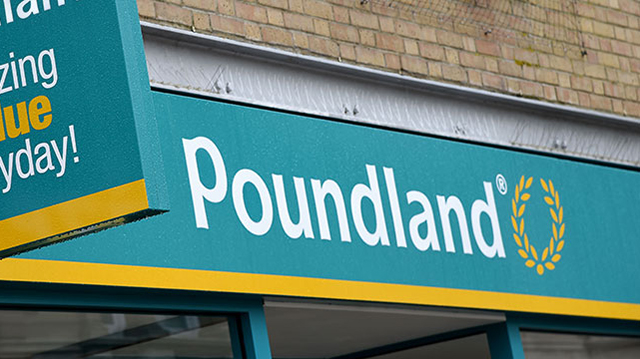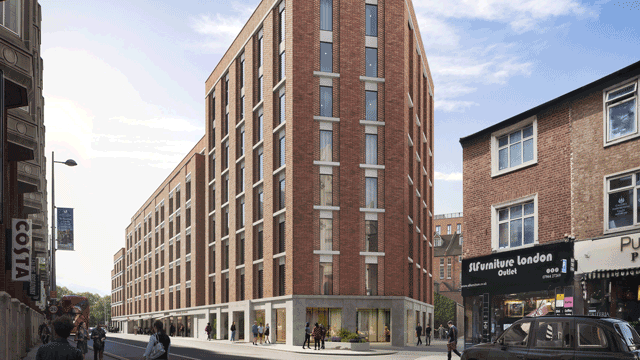Prologis’ deal to buy a retail park in Edmonton, north London, could herald a wave of similar deals in the UK, as demand for urban logistics space continues to intensify.
In an acquisition that underscores the growing polarity between the retail and warehousing sectors, Ravenside Retail Park – bought for £51.4m from M&G’s suspended fund – was acquired with a view to conversion into logistics and industrial use “in the medium to long term”. It forms part of Prologis’ strategy to expand in London.
Robin Woodbridge, head of capital deployment UK at Prologis, says that Ravenside was “of the right size and in the right location” to deliver goods to consumers “as quickly and sustainably as possible”.
He says: “Around London this means, amongst other things, having sites available for customers where they can operate electric delivery vehicles and where employees can get to work via public transport rather than by car, thereby reducing congestion and pollution.
“Alongside creating flexible commercial space which will integrate with the local area, any future redevelopment of Ravenside Retail Park will have sustainability at its heart, both in terms of building design and performance, and adaptability to changing transport trends, for example providing EV-charging infrastructure.”
Expanding last mile networks
Given that retail parks are often in ideal locations for logistics facilities, industrial investors have had their eye on investment opportunities for some time now.
JLL estimates that more than 22% of retail parks sold during the past year (collectively valued at nearly £1.8bn) were from logistics investors.
Tim Vallance, head of investor services and retail chairman at JLL, identifies better returns as a key driver, as well as the prospect of using retail parks as part of the supply chain for fulfilling online orders.
He also notes that the nature of planning consent for retail allows for the “inherently” valuable tool of direct customer interaction.
Industry speculation regarding other deals has historically surrounded established pure-play firms such as SEGRO and Panattoni, as potential purchasers for either empty stores or retail parks.
Companies traditionally dominant in industrials have already started to make moves on the retail park sector. Tritax Group, for instance, struck a deal to buy three locations for around £190m from Standard Life Investments in December, which is thought to be part of plans to create a new retail park vehicle.
M7 Real Estate has also been buying retail parks, for their scope to become click-and-collect hubs. In December it spent £18.4m on three separate retail warehouses, as part of a drive to take advantage of low rents and capital values in “strategic” locations.
David Ebbrell, chief executive of M7, tells EG: “We fundamentally believe in these as valid retail assets serving stable catchment areas, but with upside potential [as] click-and-collect hubs, which will start to make these locations more valuable from an occupiers’ perspective.”
He underlines the physical similarities between retail and industrial warehousing and their configurations, adding that the former only has the ‘retail’ moniker because they have enhanced planning uses allowing consumers to directly buy products there. They also offer a higher degree of occupation.
“These are essentially last mile locations in urban areas … they have lower density in terms of construction types [than] industrial estates, but physically the products are very similar,” he says.
Ebbrell estimates that M7 has around €400m (£340m) of retail warehousing across its wider platform; one of its funds (REIP VIII) is dedicated to the sector, which comprises around £125m of regional assets.
He reckons the competition for such locations will heat up, even though they are “very much the baby being thrown out with the retail bathwater” from a pricing perspective.
“These buildings are incredibly well located and there is a finite supply of them,” he says. “Our conjecture is that these should not be trading at a 200bps discount to what we’re seeing at similar products in urban industrial.”
While Ebbrell expects a broader confluence between retail park and industrial rents will happen “at some point in time”, the Edmonton deal involves a location where there is already some “natural convergence” – making Prologis’ latest deal “particularly interesting”.
Investment opportunities
With online continuing to accelerate as a market share of retail, the value opportunity for buying retail parks is clear.
Rising rents and values have meant that warehouses and distribution centres are becoming pricier. Retail values, on the other hand, have steadily declined; with the likes of M&G needing to offload their assets quickly, there is plenty of scope to snap up a property at a cheaper price.
Ebbrell notes that deals for urban logistics locations have reflected yields of 6-6.5%, whereas retail warehouses have been offering yields of 7.5-8%.
Industrial firms may also be able to use these new locations to expand their existing retail occupier relationships, as more retailers grow their e-commerce operations.
Charles Binks, head of logistics and industrial at Knight Frank, reckons that similar properties will enjoy competing bids from logistics firms, last-mile players and REITs.
“What we are seeing here is an opportunity to pick up these assets in prime London locations,” says Binks, pointing to a backdrop of increasingly limited supply in the capital.
The long-term view to converting these into urban logistics spaces is a likely draw, given their locations near busy thoroughfares and transport links as well as where consumers live. Existing car parking space, loading docks and high ceilings also make for attractive features.
Conversions have proved increasingly popular in London in the past year, highlighted by activity such as DHL’s conversion of a factory shop outlet in Wandsworth and a former Toys“R”Us store in Croydon, which was acquired with consent for redevelopment as a distribution hub.
Scale of demand
To give a sense of the demand for repurposed retail space, Knight Frank estimated in the autumn that there were 164 developments in the UK with consent to convert retail premises to storage and distribution uses. Of these, 83% are in urban areas and there are a further 18 consents pending, all in urban areas.
Retrofitting may present challenges, though. Potential barriers include competing uses, zoning restrictions, a lack of infrastructure to support increased traffic from trucks and a vast reduction in footfall.
However, Binks’ view is that if retail parks are “visibly struggling” with tenants collapsing into administration, then conversion to industrial as another employment use “would not be contentious” on the whole.
While there is some way to go before it becomes an established trend, the Prologis deal signals that long-held interest from industrial investors is finally starting to manifest, with more likely to follow.
To send feedback, e-mail pui-guan.man@egi.co.uk or tweet @PuiGuanM or @estatesgazette











